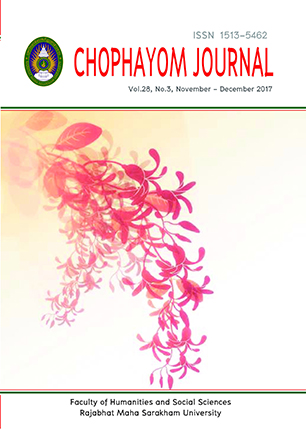Effects of Synchronous CMC on Thai EFL Learner Speaking Anxiety and Fluency
Keywords:
CLT, Synchronous CMC, FL Anxiety, Speaking FluencyAbstract
Abstract
The issue of speaking anxiety is bothering communicative tasks- the main activities in the communicative language teaching(CLT) approach, and the use of synchronous CMC in lowering anxiety level and improving speaking fluency is theoretically and empirically supported. The current study aimed to investigate 1) investigate the effects of synchronous CMC on EFL students’ level of speaking anxiety and 2) effects of synchronous CMC on EFL students’ speaking fluency. 40 EFL students in Thailand were purposively selected as the participants of the study. The participants were divided into 2 groups of the experiments to prove the effectiveness of synchronous CMC as a mode of communication. The research instruments were, a set of pre and posttest and Foreign Language Classroom Anxiety Scale (FLCAS) (Horwitz, 1986). The data were analyzed by Dependent t-test, Independent test, Mean score and Standard Deviation. The result of the study indicated the benefits of synchronous CMC in lowering level of anxiety and improving EFL learners speaking performance in terms of fluency. The result of the study could be beneficial in curriculum design in CLT approach and EFL speaking improvement. Keywords: CLT, Synchronous CMC, FL Anxiety, Speaking Fluency






